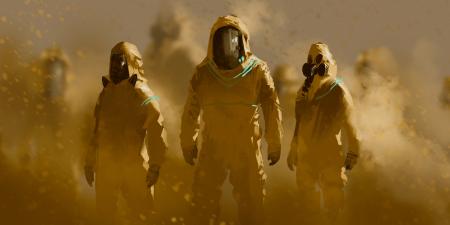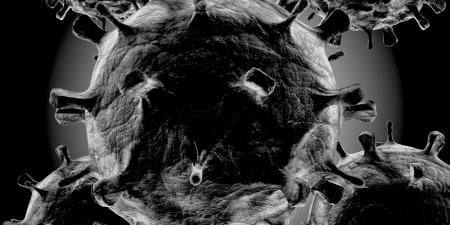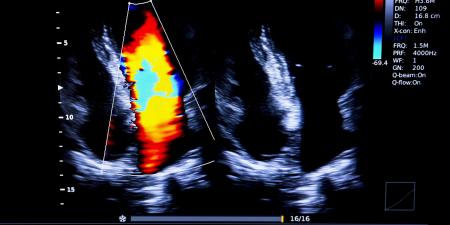The floodwaters of Hurricane Katrina marooned Anna Pou, MD, and the rest of the Memorial Medical Center staff in Uptown New Orleans in August 2005. The storm knocked out the hospital’s power and running water and sent the temperatures inside soaring above 100 degrees. The hospital’s backup generators survived the storm, but the following morning floodwaters from the sewers began to creep up, threatening to reach the hospital’s emergency-power transfer switches located a few feet above the ground [1].
The physicians working at the hospital got together and established an evacuation plan to be implemented if the hospital’s backup generators failed before rescue workers reached them. The 52 patients at LifeCare, a long-term, acute care facility for the elderly patients with multiple medical problems, which was located in the hospital but administered separately, were not taken into account. At the time, the evacuation plan did not appear to be of extreme importance, because rescue workers were expected to evacuate the entire hospital in a few hours. That, however, did not happen.
The Evacuation Process
A crew of doctors, nurses, and family members began carrying patients to the only working elevator on the second floor, which took patients to the rooftop level of the parking garage. Each patient was then put on a stretcher and maneuvered through a 3-by-3-foot hole in a machine room wall and out to the helicopter pad, where rescue workers and the Coast Guard took over.
By nightfall, the Memorial staff had gotten their patient count down from about 180 to around 130. There was an opportunity to evacuate more patients later in the night, but the staff needed rest and the helipad was not particularly safe after dark. LifeCare’s administrators were working to secure evacuation assistance for their patients, which, it was hoped, would come in the morning. However, in the middle of the night, about 48 hours after Katrina first struck, the comforting hum of the back-up generators stopped—killing the elevator and the remaining power. In LifeCare on the seventh floor, critically ill patients began suffering the consequences as the machines on which they relied, such as ventilators forcing air into their lungs, switched to battery reserves and soon sputtered out, at which point it appeared that the Coast Guard could evacuate a few very critical patients if they were brought immediately to the helipad.
By this time, the staff had been on duty for at least 2 days with little sleep and inadequate food and water. Undeterred, volunteers and staff carried LifeCare patients up many flights of stairs in the dark with hopes of getting as many patients as possible to the helipad. Other nurses and volunteers used Ambu bags to squeeze air into patients’ lungs until their arms cramped from the effort.
Still, critical patients began to die because there was not enough oxygen or manpower to save them all. The doctors had to make a triage decision. They carried 100 or so patients, not including the remaining LifeCare patients on the seventh floor, to the first floor and assigned each a number—1, 2, or 3—based on his or her status; 1s were to be evacuated first, 3s last.
The 1s were moved to the emergency room, where a group of rescue boats had arrived after sunrise, when daylight made water transportation possible. The 2s were placed in a line along the corridor leading to the hole to the helipad. The 3s were moved to a corner to wait.
When government rescue operations shifted to others trapped on rooftops throughout the city, Coast Guard helicopters began arriving less and less frequently at Memorial Hospital. By now most of the ICU and LifeCare patients had been evacuated, and those who remained were in critical condition. LifeCare patients, because they were still on the seventh and eighth floors and had not been moved to the emergency room, would have to be carried long distances to be evacuated. The heat was rising and resources were scarce. Staff was tiring from the unrelenting climbing of stairs and carrying of patients.
As the hours passed, it became clear to the doctors that they would not be able to evacuate some of the LifeCare patients. Without machinery to stabilize the patients and adequate transportation to move them to evacuation sites, it seemed likely that some would not survive. After more than 72 hours, some physicians, including Dr. Pou, decided to sedate some of the LifeCare and category 3 patients with injections of morphine and midazolam. Dr. Pou stated her intention was to “help the patients that were having pain and sedate the patients who were anxious” because she “knew they were going to be there another day, that they would go through at least another day of hell.”
After 4 days of what Dr. Pou described as “hell,” the hospital was finally empty of all surviving patients and staff. Yet, 45 decomposing corpses were eventually removed from the hospital, many more than were found at any other comparable hospital in the flooded city. This sparked an investigation that led to the arrest of Dr. Pou and the nurses connected to the deaths of four patients.
The Investigation
The Louisiana attorney general, Charles Foti, Jr., opened investigations into hospital and nursing home deaths citywide. A LifeCare lawyer alerted the attorney general to nine alleged cases of euthanasia at Memorial. A coroner was hired to determine the patients’ cause of death through autopsies. The coroner detected morphine in all nine bodies. Next, the attorney general’s office hired a forensic pathologist to review the toxicology reports of four of these nine patients. The forensic pathologist concluded that all four deaths were homicide, caused by human intervention. About a year after the storm, Dr. Pou was arrested and charged with one count of second-degree murder and nine counts of conspiracy to commit second-degree murder.
Regulations that Apply to Physicians in Emergencies
None of the federal regulations that outline the standard of care and provide for physician liability protection in emergency situations apply to Dr. Pou. Under the federal Emergency Medical Treatment and Active Labor Act (EMTALA), Medicare- and Medicaid-funded hospitals with emergency rooms must screen all persons coming to the emergency department to determine whether they have medical conditions requiring immediate or urgent care [2]. When they do, the hospital staff must either stabilize or transfer the patient to a facility that is willing and able to provide appropriate treatment. EMTALA does not apply to Dr. Pou because those for whom she was caring were admitted patients—inpatients—not emergency room arrivals.
Nor does other federal regulation match Dr. Pou’s circumstances. The Volunteer Protection Act of 1997 (VPA) provides certain immunities to volunteer health care workers in emergencies and public health epidemics, but it does not apply because Dr. Pou was not volunteering; she was a staff physician [3].
Louisiana’s Good Samaritan laws, which remove liability for any civil damages resulting from a physician who “in good faith gratuitously rendered emergency care or services at the scene of an emergency” or a physician “who in good faith responds to an imminent life threatening situation or emergency within the hospital or facility and whose actual duty in the hospital or facility did not require a response to an emergency situation,” do not apply to on-duty staff physicians [4].
Dr. Pou, however, is subject to another Louisiana state law, based on a model federal statute, which provides immunity for physicians working in emergency situations. In December 2001, the Centers for Disease Control (CDC) released the Model State Emergency Health Powers Act (MSEHPA), which includes provisions intended to ensure the development of comprehensive plans for emergencies, facilitate early emergency detection, and grant state and local officials powers in order to handle emergencies [5]. As of July 15, 2006, MSEHPA was introduced in whole or part in 44 states and the District of Columbia. Thirty-eight states passed bills or resolutions that include provisions closely related to the act [6]. Louisiana is one of these states.
The Health Emergency Powers Act that Louisiana passed in 2003 contained language stating that “during a state of public health emergency, any health care providers shall not be civilly liable for causing the death of, or injury to, any person…except in the event of gross negligence or willful misconduct” [7]. In Louisiana, “gross negligence” has been defined as the “want of even slight care and diligence” and the “want of that diligence which even careless men are accustomed to exercise” [8]. Generally speaking, the term “willful misconduct” refers to conduct undertaken by one who knows she is committing or intends wrongdoing.
Under the applicable state statute, then, Dr. Pou must have acted either with “gross negligence or willful misconduct” or in “bad faith” to be civilly liable for the deaths of her patients at Memorial.
The Brief Prosecution of Dr. Pou
The Louisiana attorney general charged Dr. Pou, and, after a review of the evidence and testimony from Memorial staff, the grand jury decided not to indict her, eliminating the possibility of finding her guilty in criminal proceedings. Three civil suits naming Dr. Pou as the defendant, however, are pending in Louisiana state court. Dr. Pou has filed a brief with the Louisiana Supreme Court opposing the release of a 50,000-page file assembled by investigators on deaths at Memorial, so little information about the current proceedings is available [1].
The Support for Dr. Pou
As evident in the grand jury’s decision not to indict her, Dr. Pou has numerous supporters who consider her decision heroic. Rather than abandon patients, she remained at the hospital with them for 4 days without adequate sleep, food, water, resources, or manpower. According to the American Medical Association’s Code of Medical Ethics, “Individual physicians have an obligation to provide urgent medical care during disasters” that “holds even in the face of greater than usual risks to their own safety, health or life” [9]. It is not speculation to state that Dr. Pou and the Memorial staff put their own health and safety at risk in the atrocious post-Katrina environment and successfully evacuated the majority of Memorial’s patients despite life-threatening conditions. The AMA has commended Dr. Pou for her efforts, and the chair of its board of trustees, Edward L. Langston, MD, stated, “We believe these physicians served as bright lights during New Orleans’ darkest hour” [10].
The pending civil suits will eventually be resolved and the remaining questions about Dr. Pou’s legal liability will be answered. But exactly what happened over those 4 harrowing days at Memorial may never be fully known.
References
-
Fink SL. The deadly choices at Memorial. The New York Times Magazine. August 25, 2009. http://www.nytimes.com/2009/08/30/magazine/30doctors.html?pagewanted=1&_r=1&emc=eta1. Accessed July 16, 2010. The following details about the 4 days at Memorial Hospital after Hurricane Katrina are taken from Fink’s account.
-
Emergency Medical Treatment and Active Labor Act. 42 USC sec 1395. http://www.medlaw.com/healthlaw/EMTALA/statute/emergency-medical-treatme.shtml. Accessed July 28, 2010.
-
Limitation of liability for volunteers. 42 USC 139 sec 14503. http://vlex.com/vid/limitation-liability-for-volunteers-19243743. Accessed July 28, 2010.
-
Gratuitous service at scene of emergency; emergency care at hospitals; limitation of liability. LSA-RS 37 sec 1731.http://law.justia.com/louisiana/codes/44/93432.html. Accessed August 10, 2010.
-
Centers for Law and the Public’s Health at Georgetown and Johns Hopkins Universities. The Model State Emergency Health Powers Act. http://www.publichealthlaw.net/MSEHPA/MSEHPA2.pdf. Accessed July 14, 2010.
-
Centers for Law and the Public’s Health at Georgetown and Johns Hopkins Universities. The Model State Emergency Health Powers Act website. http://www.publichealthlaw.net/ModelLaws/MSEHPA.php. Accessed August 10, 2010.
-
Public information regarding a public health emergency-miscellaneous. La Rev Stat ch 29, sec 771, (B)(2)(c). http://law.justia.com/louisiana/codes/13/207689.html. Accessed August 11, 2010.
-
State v Vinzant, 200 La 301, 7 So2d 917 (La 1942).
-
American Medical Association. Opinion 9.067 Physician Obligation in Disaster Preparedness and Response. Code of Medical Ethics. Chicago, IL: American Medical Association; 2008-2009. http://www.ama-assn.org/ama/pub/physician-resources/medical-ethics/code-medical-ethics/opinion9067.shtml. Accessed May 18, 2010.
-
O’Reilly KB. Grand jury clears Dr. Pou; medicine wants to protect future disaster responders. American Medical News. August 13, 2007. http://www.ama-assn.org/amednews/2007/08/13/prl20813.htm. Accessed July 14, 2010.



